
Driftwood
-
Posts
457 -
Joined
-
Last visited
-
Days Won
5
Content Type
Profiles
Forums
Events
Downloads
Posts posted by Driftwood
-
-
9 minutes ago, iGPU said:
I updated the earlier post (here) that provides a cursory comparison of USB device naming by SSDT and a kext file.
(I use Spoilers to keep the graphics and posts shorter; easier to scroll through.)
I wonder if the json file USBToolbox produces could be read in in such a way to make it all even easier for device naming/type assigning in SSDT. I kind of like the visual aspect of USBToolbox...
-
47 minutes ago, iGPU said:
Correct: PCIs are shared with SATA on Intel.
AMD, on the other hand, shares with .M2 slots with CPU lanes and PCI slots. This is true on X570 and TRX40 (it was maddening to sort this out soon after the X570s came out as AMD gave us no hints about this problem). This sharing is why adding more .M2 NMVe SSDs foul up PCI slots and vice-versa on AMD. I've previously discussed these issues on this thread, but the thread has become so large that they are as if from a bygone era.

I know what you mean @iGPU "Bygone era" made me laugh 🙂
-
 1
1
-
-
-
Here's a typical USBToolbox edited screen in an earlier test inside Windows.exe version.
Basically it shows your Controllers, Scans your ports, (you can use its guesses if u like) but best to plug in a USB3/2 or even USB C device into necessary ports, swap USB C plugs around to test speed throughput, switch off USB 2 Or USB3, isolate and unlink from a 'Companion' port, etc...
Its really pretty good.
-
 1
1
-
-
@Rocket88 and @Rox67er / Asrock Creator users.
You're only going to get sleep/shutdown working with the S5 / BIOS settings. Please experiment with the following;-This is how I have them
Turn on Onboard LED in S5 to =Disabled (in Onboard Devices Configuration screen)
and in ACPI Configuration:
PCI Devices Power On = Disabled
USB Power Delivery in Soft Off State (S5) to =Enabled
-
Latest OpenCore 0.7.4 will fix the update to Beta 7 Monterey negating the need to switch SMBIOS or any silly hacks we've been doing!
-
Ive decided to ditch my USB map as each of my USB controllers are no bigger than 10 ports. Well under the 15 per controller. Tell me if Im wrong?! Everything works fine without!
-
 1
1
-
-
4 hours ago, iGPU said:
While I got the update to show up using j160; I cannot get past the "Macintosh HD" first reboot stage. Even using iMac17,1 does not help. (Driftwood, above you referenced "iMacPro17,1" and the other forums are using "iMac17,1".)
Since I'm now at work, later tonight I'll try changing other settings in SMBIOS associated with iMac17,1.
Sorry this is what I used.... quickly generated a SMBIOS for the cause. Feel free to use any of this as I now no longer need.
I actually used all of these numbers in my config just in case it balked. I dont think you'll need to use j160 as the Mac17,1 profile will get you into the install. So leave SecureBootModel on Disabled. I believe quite a few Intel users had to do the same as above, and sometimes they had to re-download a few times. I think if you download with the 17,1 profile booted you'll be good.Type: iMac17,1
Serial (SystemSerialNumber): C02Q7EYGGG7L
Board Serial (MLB): C02533200GUGPF7UE
SmUUID: 2D61C34C-61C7-4854-82DC-44DDBBA3DD34
Apple ROM: 98FE945C3654
You could actually use the above to download, then retry the install, and on 2nd reboot you enter your 7,1 profile.
-
-
-
Hey @fabiosun did you manage to suss how you got yours working? Im taking you didn't use the iMacPro17,1 method?
When I tried just the MacPro7,1 method it kept going on a continuous reboot loop on the second reboot. So was forced to use the 17,1 hack method.Also question for everybody, if running Quicktime movies/Apple TV / or FCPX (like here) how much of your CPU% in VTDecoderXPCService is being used? Over 300% playback and sometimes unto 1000% for FCPX encodes? I would be interested in hearing results.
Actually Davinci shows less than half the cpu& time over FCPX doing the same video.
-
-
Big Sur 11.5.2 straight to Monterey Beta 12.06 and then onto beta 7. Strangely I could only download the installer with that cruddy old EFI with all the patches on (no j160 was used!) - Reduced patch EFI just wouldn't do it. And then switched half way thru install (2nd reboot) to reduced patch EFI. And we're in! Now lets do 7.
Now to do the beta 7 update you have to change SMBIOS to iMacPro17,1 - reboot - get the update. download,
Install (during install some users have managed to change SMBIOS back to = MacPro7,1 and get the install working), or, after first reboot switch to your OC usb stick with 7,1 SMBIOS on (which is what I did in the end).
Anyways, here's the complete process I did:-
1/ Change config to iMacPro17,1
Now let it download... you shouldn't need to set j160 in SecureBootModel to download.
2/ Let it continue install...
3/ It will reboot to black install gauge...
4/ Next reboot (if you can, switch configs to your 7,1 SMBIOS on a separate USB stick ) or let it go on to 17,1 install.
5/. As soon as your in Beta 7, ensure SMBIOS is back to MacPro7,1 settings, reboot to check. Update NVRAM.
We're in!
-
 2
2
-
-
@fabiosun You mean the first three patches: enter 20 for 32 core patches? Yeah I know about those here. Ill update to 703 shortly...
Here's current EFI: Driftwood BS1152 Current EFI.zipThe whole exercise above was for Asrock owners to demonstrate that Shutdown should work simply by following the S5 power options settings of mine in BIOS. Whether BT is used or not.
-
8 minutes ago, fabiosun said:
I am saying they are old patches
New way now with a patch which helps to do not use many others
and many others not useful
follow AMD patches link and adjust first ones to your CPU
however happy you come back 😉
I have the minimal set on my EFI. 🙂 Just need to update OC now from .701 to .703
-
3 hours ago, fabiosun said:
I cant say for entire EFI ...but for kernel patches section you can do better in these days! 🙂
Sorry all, I left in all patches for anybody using my EFI just in case they needed some, also (anyone reading) paste in serials/MLBs... Actually this EFI boots and works fine with all OC patches untouched for those who wondered!
5 hours ago, iGPU said:This is good news for you. Congrats!
I looked over your files. I would add that many of us have used either USBPorts.kext or SSDT files to enable or disable USB ports; but you never want to use both together. If done correctly, they are equivalent. (I think the PTS to ZPTS patches were for Intel mobos.)
I believe that fabiosun and I have had sleep, shutdown and restart working for some time now. As you've observed, correctly functioning USB ports and BIOS settings are important, as is a correct MmioWhitelist structure.
Sometimes the BT problems are also related to a USB port since BT (not Wifi) is powered by USB. I discussed some of those BT-USB issues here and here (the latter, at bottom of post, where I describe how to remove a device from IORE using an SSDT; I'm don't think this is easily done using a kext file). Not related to your post, but since using Monterey > ß1, I've disabled all BT/Wifi kext files (including BlueToolFixup.kext); I'm using the Fenvi-1200M PCI card with the internal AX-200 inactivated as discussed in the above links.
Hi @iGPU: My point was, in BIOS you can leave BT on at Enabled/disabled, but if you remove the AX200 Intel wireless card and exchange for a Mac friendly Brdcom one like I think all us Asrock Creator users seem to have done you can disable the AX200 in PBS section of BIOS. Then with all the S5 settings in my graphics set, Shutdown will work again.
4 hours ago, fabiosun said:@Driftwoodi thought you had sleep and shutdown/reboot working well from months…
yes I remembered well 🙂
in my case I do not have/use Wi-Fi or BT in this rig
from highsierra to monterey beta 6 sleep reboot and shutdown work perfectly the latter thanks to mmio whitelist
i have had only a problem with sleep from a new catalina version
never solved in that specific release and above (only Catalina)
i do not use any usb remapping method
i do not think is useful for me on amd rig
Re: Shutdown not working since update: I HAD everything working well (inc shutdown). until I recently updated to 11.5.2 Big Sur and updated my Catalina boot drive. Sleep worked with my USB settings kext but for some reason my Shutdown failed to. That was the point as other Asrock users had said their Shutdown didnt work under latest BS and Monterey.
Also, my hunch is that TRX40 need no fixes for shutdown. Just use BIOS. I also think it would work without the USB kexts in my EFI (but didnt try). The reason I used the USBfixtool kext was to discover what I would need on for Monterey which distinctly requires the 15 port rule... running it under Windows allows you to discover which linked ports and types.... thats why I prefer it over others.
-
SUCCESS!
SHUTDOWN / SLEEP with BIOS Control (All take note)
*** NO ssdts Required ****
PLUS, MY USB MAP for ASrock TRX40 Creator UsersPlus, my EFI with the map inside
(Tested under Big Sur 11.5.2 and OC 0.71 built with Pavo's GenX)
So here's my EFI for Asrock TRX40 Creator motherboard users. This EFI shutsdown correctly (see BIOS settings) and has Sleep Power management. Other motherboard users should check their BIOS for matching settings.
Driftwood EFI:Driftwood EFI Big Sur.zip
My EFI has my own USBMap_D.kext requiring USBToolBox.kext. I DON'T like to use SSDTs as I dont require anything.
Getting Shutdown to work was fun. After I thought long and hard about it, it HAD to be something to do with BIOS and/or maybe turning off Bluetooth. But then it was the Power management sections which took closer scrutiny...So see my screens below to check you have those settings enabled/disabled and matched to mine. Having turned the Bluetooth/on and off I dont think it was that. But Turn Onboard LED to S5 to =Disabled, and, USB Power Delivery in Soft Off State (S5) to =Enabled could be the reason why Shutdown works.
You absolutely DON'T NEED FixShutdown-USB-SSDT.dsl OR _PTS to ZPTS Patch or any Clover style fix.
FOR ASROCK CREATOR USERS ONLY:
I've attached a BIOS .BIN file if any Asrock TRX40 Creator (with latest BIOS already installed) can load in as a profile (just copy it to a external USB disk and on BIOS Setup on the Memory Screen choose the Add the Profile from Disk and install my BIOS settings!
My BIOS Profile: driftwood_BIOS.BIN.zip
Here's the BIOS screens needed to get Shutdown working:-
A video will be placed here soon proving shutdown and sleep.
-
On 6/28/2021 at 12:09 AM, iGPU said:
On booting with Clover, I decided to look at Memory slot issues before looking at the Patches since the Memory Error pop-up was annoying me. After several re-arrangements and re-boots, I came up with code that seems to almost work.
If the code in Spoiler below is copied and pasted into the Text section of Clover, it will produce the Memory window shown below.
<key>Memory</key> <dict> <key>Channels</key> <integer>0</integer> <key>Modules</key> <array> <dict> <key>Frequency</key> <integer>3600</integer> <key>Part</key> <string>CMK64GX4M2D3600C18</string> <key>Serial</key> <string>AAA000000000</string> <key>Size</key> <integer>32768</integer> <key>Slot</key> <integer>0</integer> <key>Type</key> <string>DDR4</string> <key>Vendor</key> <string>Corsair</string> </dict> <dict> <key>Frequency</key> <integer>3600</integer> <key>Part</key> <string>CMK64GX4M2D3600C18</string> <key>Serial</key> <string>AAA000000001</string> <key>Size</key> <integer>32768</integer> <key>Slot</key> <integer>1</integer> <key>Type</key> <string>DDR4</string> <key>Vendor</key> <string>Corsair</string> </dict> <dict> <key>Frequency</key> <integer>3600</integer> <key>Part</key> <string>CMK64GX4M2D3600C18</string> <key>Serial</key> <string>AAA000000002</string> <key>Size</key> <integer>32768</integer> <key>Slot</key> <integer>2</integer> <key>Type</key> <string>DDR4</string> <key>Vendor</key> <string>Corsair</string> </dict> <dict> <key>Frequency</key> <integer>3600</integer> <key>Part</key> <string>CMK64GX4M2D3600C18</string> <key>Serial</key> <string>AAA000000003</string> <key>Size</key> <integer>32768</integer> <key>Slot</key> <integer>3</integer> <key>Type</key> <string>DDR4</string> <key>Vendor</key> <string>Corsair</string> </dict> <dict> <key>Frequency</key> <integer>0</integer> <key>Part</key> <string></string> <key>Serial</key> <string></string> <key>Size</key> <integer>0</integer> <key>Slot</key> <integer>4</integer> <key>Type</key> <string></string> <key>Vendor</key> <string></string> </dict> <dict> <key>Frequency</key> <integer>0</integer> <key>Part</key> <string></string> <key>Serial</key> <string></string> <key>Size</key> <integer>0</integer> <key>Slot</key> <integer>5</integer> <key>Type</key> <string></string> <key>Vendor</key> <string></string> </dict> <dict> <key>Frequency</key> <integer>3600</integer> <key>Part</key> <string>CMK64GX4M2D3600C18</string> <key>Serial</key> <string>AAA000000006</string> <key>Size</key> <integer>32768</integer> <key>Slot</key> <integer>6</integer> <key>Type</key> <string>DDR4</string> <key>Vendor</key> <string>Corsair</string> </dict> <dict> <key>Frequency</key> <integer>3600</integer> <key>Part</key> <string>CMK64GX4M2D3600C18</string> <key>Serial</key> <string>AAA000000007</string> <key>Size</key> <integer>32768</integer> <key>Slot</key> <integer>7</integer> <key>Type</key> <string>DDR4</string> <key>Vendor</key> <string>Corsair</string> </dict> <dict> <key>Frequency</key> <integer>3600</integer> <key>Part</key> <string>CMK64GX4M2D3600C18</string> <key>Serial</key> <string>AAA000000008</string> <key>Size</key> <integer>32768</integer> <key>Slot</key> <integer>8</integer> <key>Type</key> <string>DDR4</string> <key>Vendor</key> <string>Corsair</string> </dict> <dict> <key>Frequency</key> <integer>3600</integer> <key>Part</key> <string>CMK64GX4M2D3600C18</string> <key>Serial</key> <string>AAA000000009</string> <key>Size</key> <integer>32768</integer> <key>Slot</key> <integer>9</integer> <key>Type</key> <string>DDR4</string> <key>Vendor</key> <string>Corsair</string> </dict> <dict> <key>Frequency</key> <integer>0</integer> <key>Part</key> <string></string> <key>Serial</key> <string></string> <key>Size</key> <integer>0</integer> <key>Slot</key> <integer>10</integer> <key>Type</key> <string></string> <key>Vendor</key> <string></string> </dict> <dict> <key>Frequency</key> <integer>0</integer> <key>Part</key> <string></string> <key>Serial</key> <string></string> <key>Size</key> <integer>0</integer> <key>Slot</key> <integer>11</integer> <key>Type</key> <string></string> <key>Vendor</key> <string></string> </dict> </array> <key>SlotCount</key> <integer>12</integer> </dict>
Go to Text pane below to paste all of code into area of Memory as shown below:
This is very similar to what is seen under OpenCore (shown below).
The above code at least shifts the DIMMs into the correct positions, mimicking what we see under OC. However, under Clover, there is a warning about single modules being too large. I think the problem is with Clover. When booting with Clover, Clover won't accept more than 16GB per DIMM (see the Size pop-up on the SMBIOS pane; it maxes out at 16384), unlike OpenCore. Clover then probably sends the wrong DIMM size data to macOS, leading macOS to generate the Memory error msg.
If I try to fool Clover by only entering 16GB instead of 32GB, the computer won't boot (I suppose it knows that 256GB are present, not 128GB).
I don't know who the developers are, but I think this should be fixable. If fixed, we could stop memory error flags.
[Now, if you have smaller DIMMs, then this may work for you. If you have fewer DIMMs and they're also smaller, you'll have to work out the pattern as I'm not pursuing further.]
On a related matter, despite entering a consistent SN and UUID, which can be verified in Clover logs and is properly saved in the Clover config.plist file, Clover in the SsInfo window (Spoiler below), keeps the correct SN, but changes the UUID and enters it own ROM. Weird.
Like you I hate the memory checks but am not inclined to use a kext to switch off the annoying notification.
Would changing the RAM speed to 2933MHz help? What constitutes the memory check? The closest we can achieve is their top of the line machine with:- 28-core 1.5TB 2933MHz DDR4 ECC LR-DIMM or R-DIMM
?
Is this still the more 'Mac Friendly' way of doing it or do you all use Restrict Events? https://dortania.github.io/OpenCore-Post-Install/universal/memory.html#mapping-our-memory
I see using DMIDecode the Mac Pro 7,1 expects ALL memory slots to be filled so you have to incorporate some dud/fake populated slots.
-
13 hours ago, Rox67er said:
@Rocket88 Just tested and if I enable WEG I loose video output after 2nd boot stage (initial apple logo and boot progress is visible but after loading drivers no more display)
I also loaded up the SSDT but still immediate wake after sleep. What did you mean with this line:
Need Realtek audio port to be defined. Without this, your computer will attempt to sleep and then pop back on.
Defined in the SSDT or in OpenCore???
*Defined using USB mapping kexts or ssdt Rocket88 means (ports either enabled or not)
i dont define realtek audio or use the ALC kext as Im firewire, i dont define LED controller either with USBToolkit & myusbkext, I dont use ssdts at all. I have Above 4G enabled. Sleep works, even turns my firewire off.
If you have windows define your usb ports and types with usbtoolkit (download windows.exe/zip from usbtoolkit beta site) - its easier than mac version plus you get to see all the linked ports and types and then jut enable 15 ports from the total available it finds. Remember usb3 counts as 2 ports. Also it helps to show which way round you should insert your usb-C cables should go to achieve maximum 10Gb/s rather than superpeed! IfI get a chance Ill upload a video demoing sleep in BS11.5.2.
PS I dont use WEG.
-
One thing Ive noticed with Asrock TRX40 board is if you fully populate all PCI-E slots and all NVMEs, plus a few internal SATAs / SSDs, and even if you've USB set to 15 ports, you can get quite a few problems under Big Sur. I had three M2 nvme's (2x MP600s and a 8tb Rocket). The MP600s on Slot 1 and 2, Rocket on 3. I found Mac BS boot on SSD was very problematic with ethernet and firewire card not working or erratically when they did.
If I pulled out the slot 2 MP600 m2 drive all seems perfect!
So watch your PCIE resources... they soon add up and begin to cause problems.
FIREWIRE+RME Fireface800/400 fix under Big Sur
For anyone with problems getting Firewire and RME Fireface audio working under Big Sur (11.5.2) and onwards, you may find yourself reinstalling the RME drivers time and time again to combat crackling. You shouldn't have to. Simply install, 'Accept' Security and Privacy for the RME driver, reboot. On reboot, you may hear crackle on audio for the RME first time. However, the switch off RME, then Log Out current User, Switch on RME (wait until red light goes out) and Login again as your user (ie dont reboot), and the RME should reset (orange light and red light should be out, and only two nice green LEDs indicating everything is sweet). Music!
-
On 9/12/2021 at 4:35 PM, Rocket88 said:
My sleep always works. For me, I had to set up my USB ports correctly.
Attached are my settings for Asrock TRX40 Creator. Your case settings will be slightly different than mine.
* Need Realtek audio port to be defined. Without this, your computer will attempt to sleep and then pop back on.
* On power up, no Realtek audio. Requires 1 sleep to work. Wish I could figure this out.
* My Logitech camera quits working after two sleeps. I have to unplug and replug to get it to work.
* LED Controller port MUST NOT be defined to keep from getting Code 99 problem.
Have you tried defining with USBToolkit.kext. Using Windows.
As you know, I have sleep. And I have Realtek Audio /ALC and LED Controller undefined in USB definitions. I use Above 4G. Also I dont bother with SSDTs
-
macOS 10.15.7 Catalina (19H1417) Security Update All good! Haha! 😉
-
 1
1
-
-
23 hours ago, Rocket88 said:
I could not make Above 4G work, but CSM is disabled. Everything else is the normal BIOS default settings.
Check MMIO as maybe change with Above 4G if I remember.
-
Have we got an upgrade from Big Sur to Monterey b3 working yet without having to do fresh. Hope you all well, been busy filming!

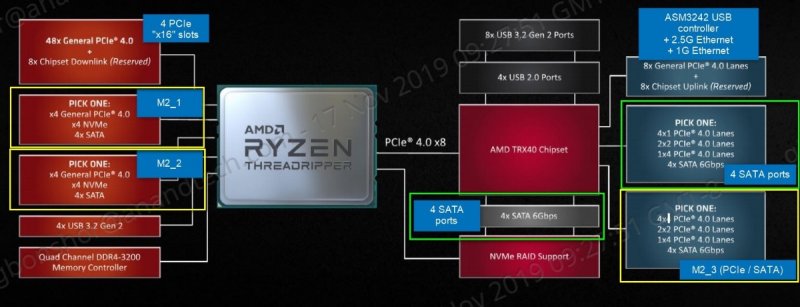
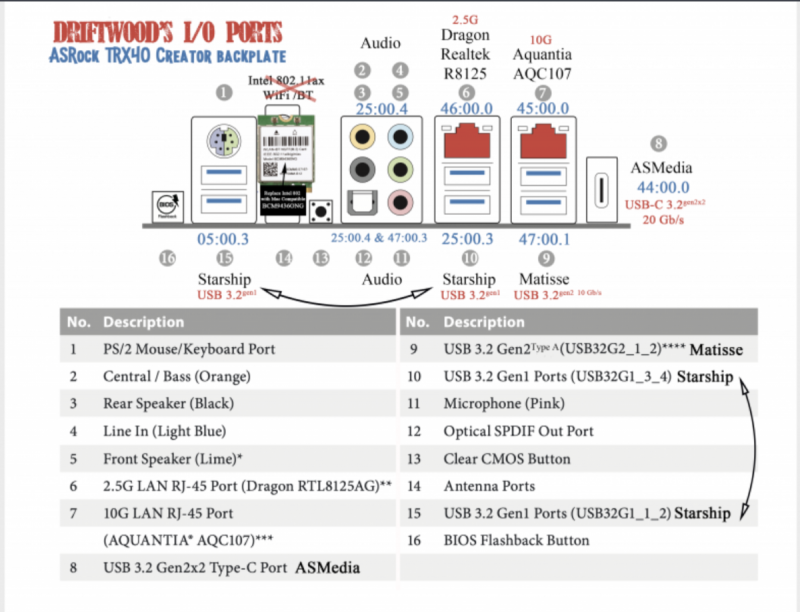
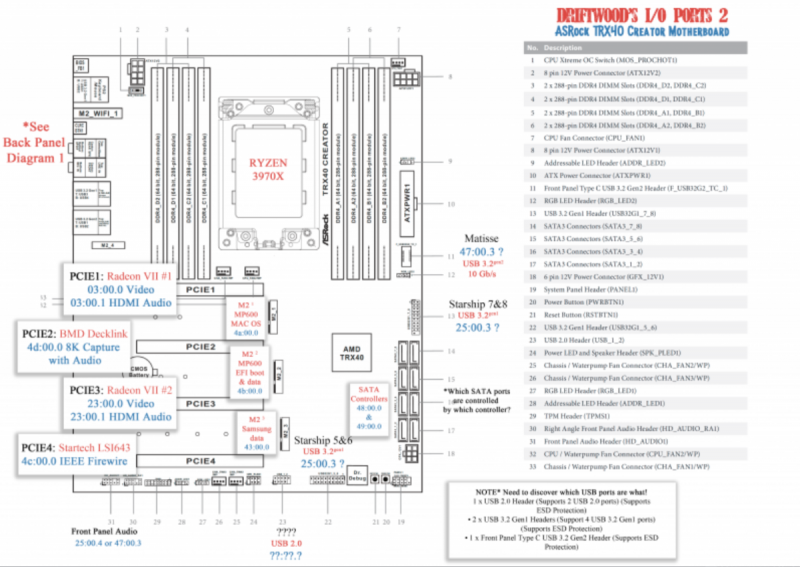


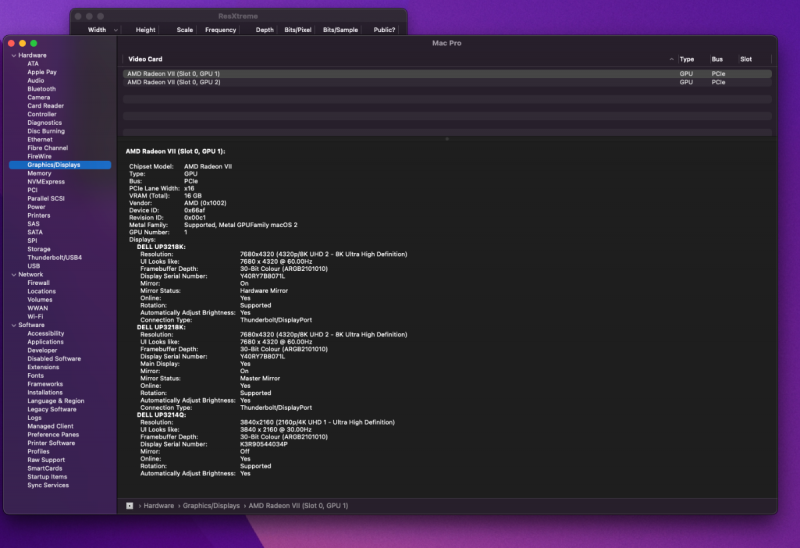

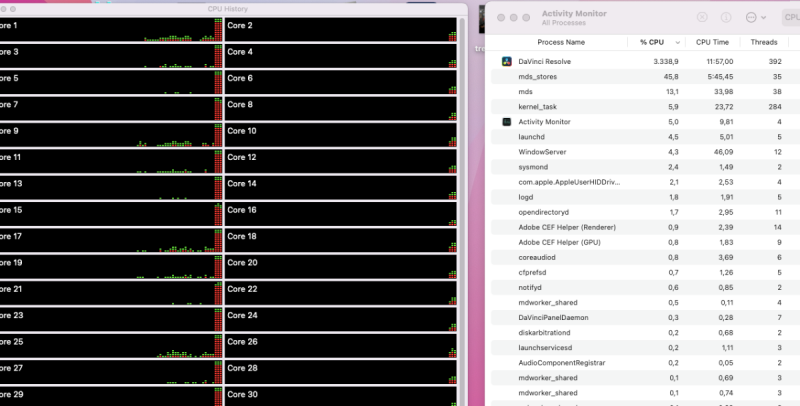

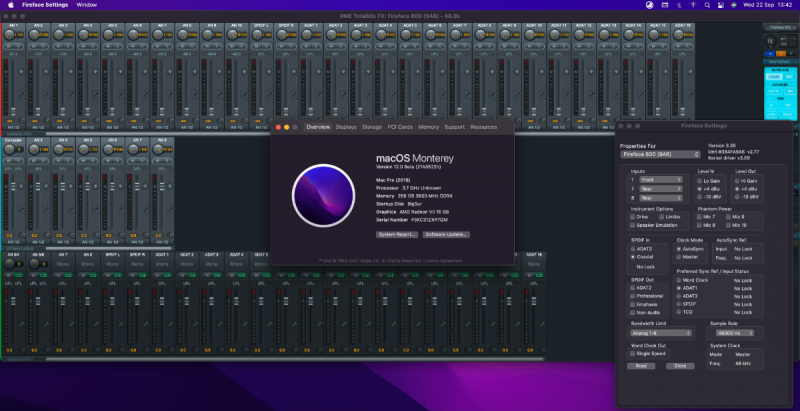
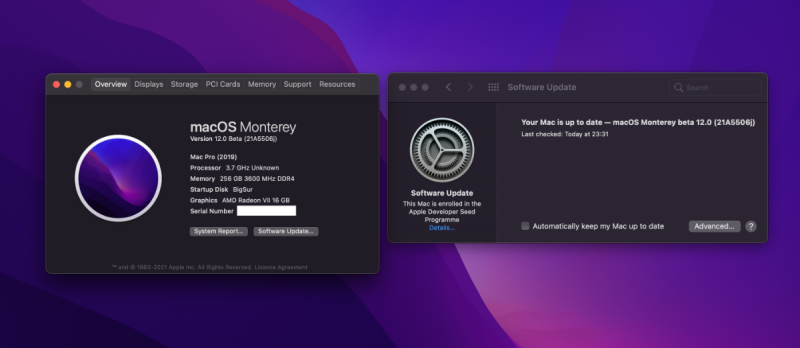
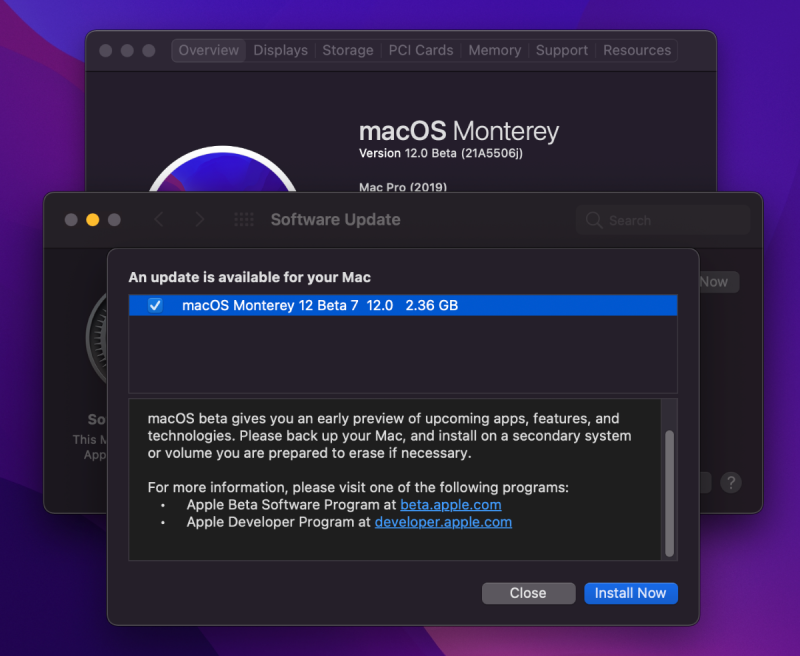
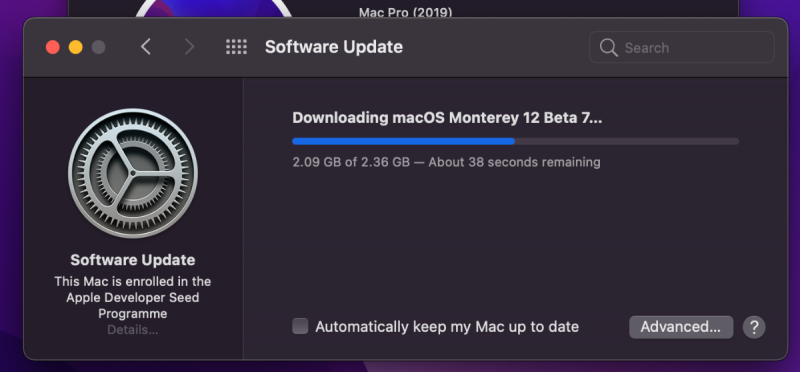
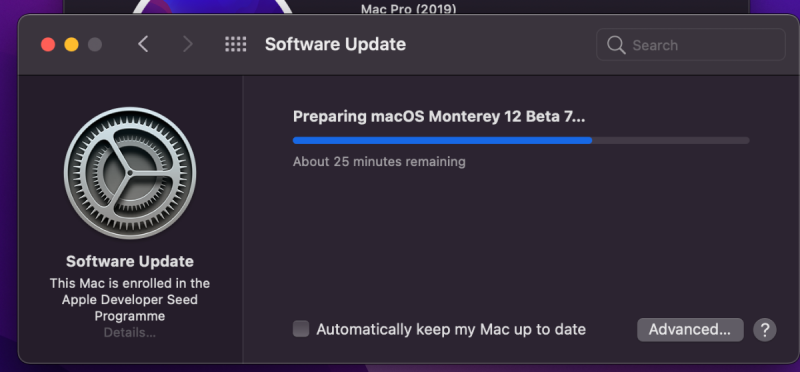
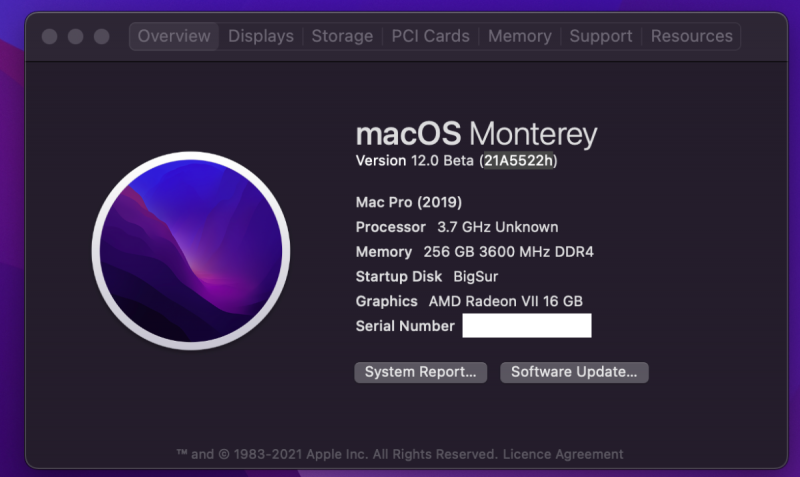
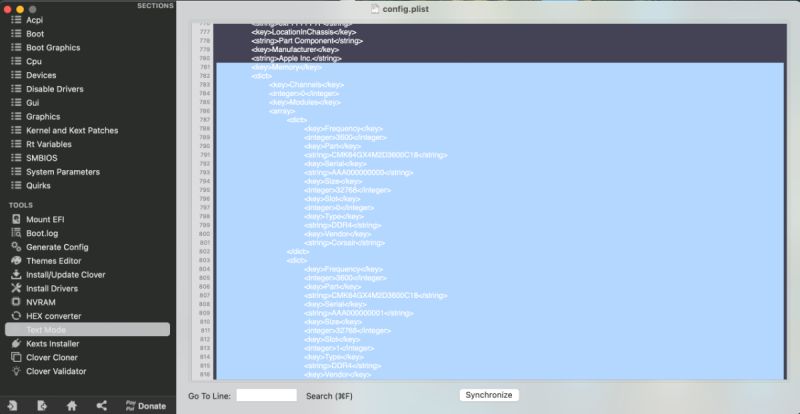
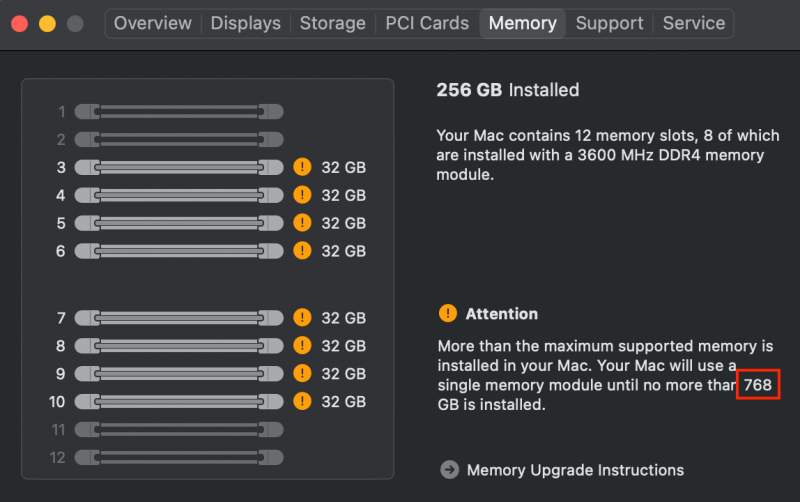
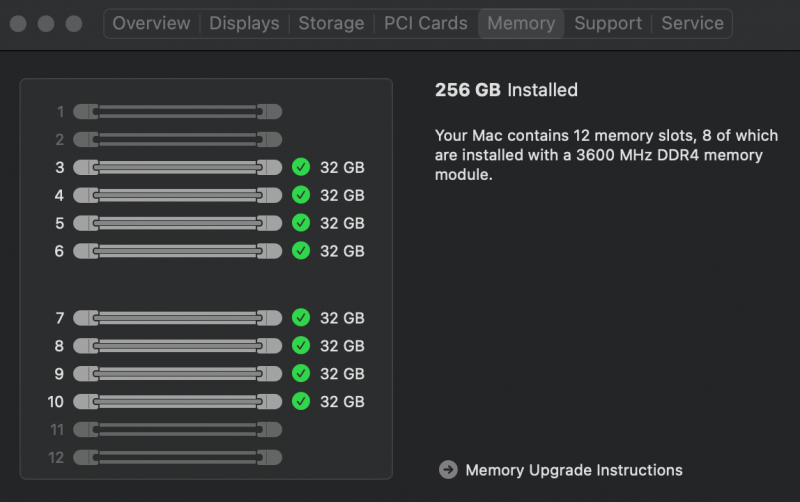
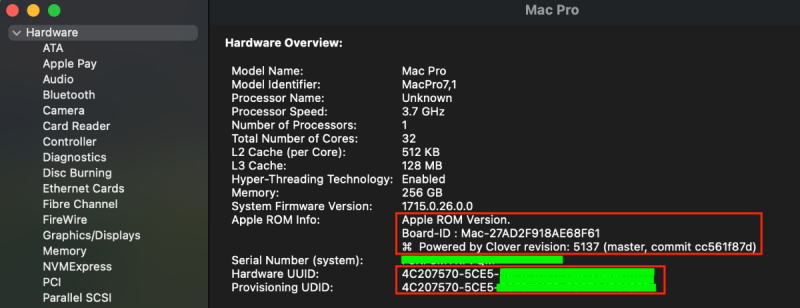
[Discussion] - TRX40 Bare Metal - Vanilla Patches
in General
Posted · Edited by Driftwood
@Rox67erand @Rocket88
Can you do an experiment. You're both using Broadcom like me (Apple wifi/BT native) yeah?
Keep my S5 settings (like u saw above ^) in BIOS
1. Still in BIOS, switch off BT (On/Off) to Disabled, Save BIOS, Reboot and try Sleep / Shutdown.
Note what happens.
2. In BIOS, Switch back on BT (On/Off) = Auto, and Switch off the Intel Wifi &AX200 to Disabled. Save BIOS, reboot and again try Sleep / Shutdown - again note what happens.
3. Now in BIOS switch both BT (On/Off = Disabled and Intel Wifi &AX200 to Disabled), Save BIOS, reboot and again try Sleep/Shutdown - noting anything.
4. In BIOS, now Switch both on to Enabled and save, reboot and try again taking note.
Take note, and let me know what happens with Bluetooth and Wifi (ie test them on Desktop on & off for working) whilst the 4 above conditions are operative. ie are they still working. Remember to try both Shutdown & Sleep.
I am interested to see what happens with your current varying EFI setups whilst the above are selected.
Make sure you try each variable and when you instruct Sleep Mode, leave asleep for at least 5 minutes before waking.
Thank you.